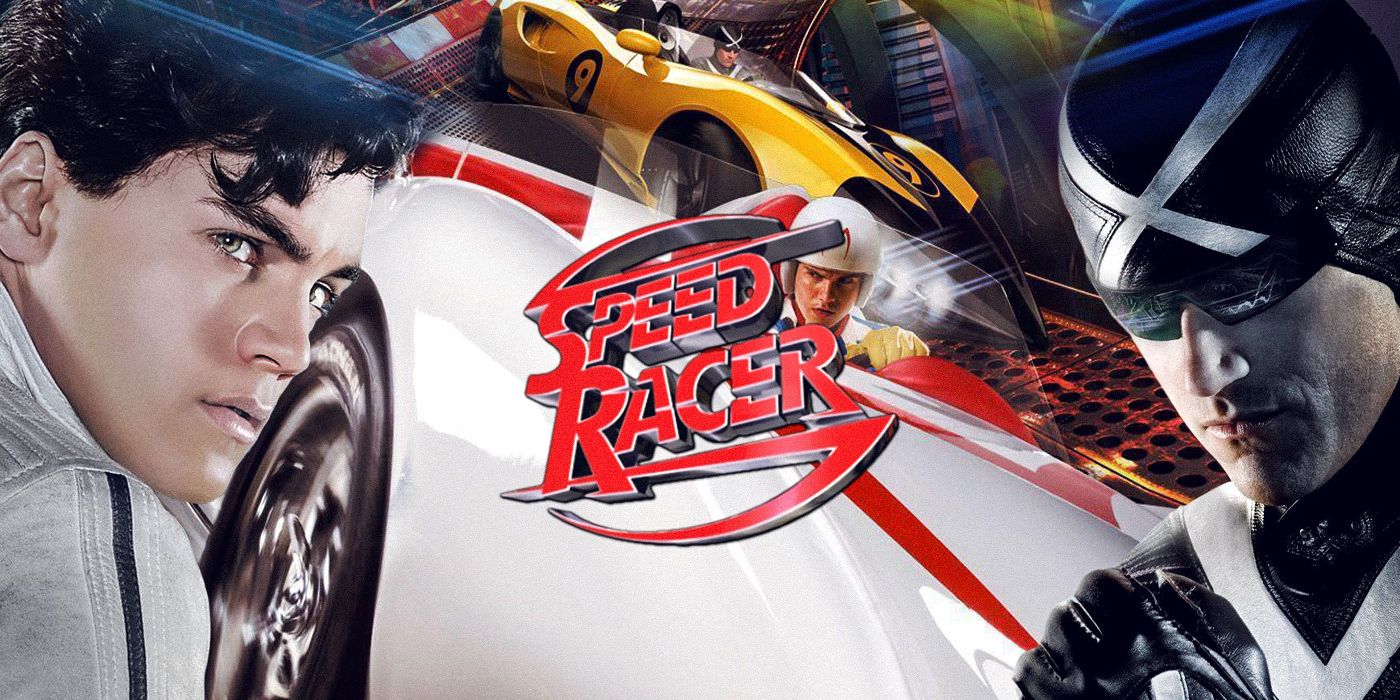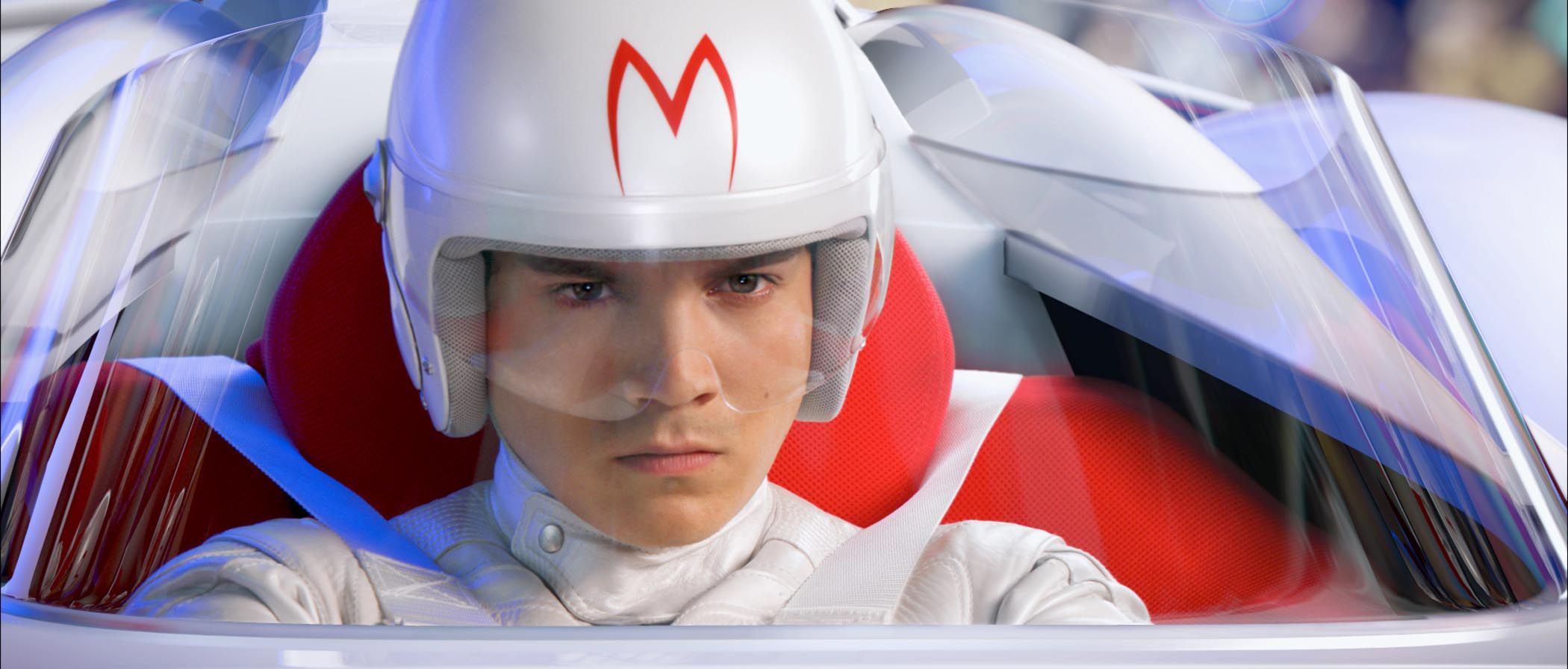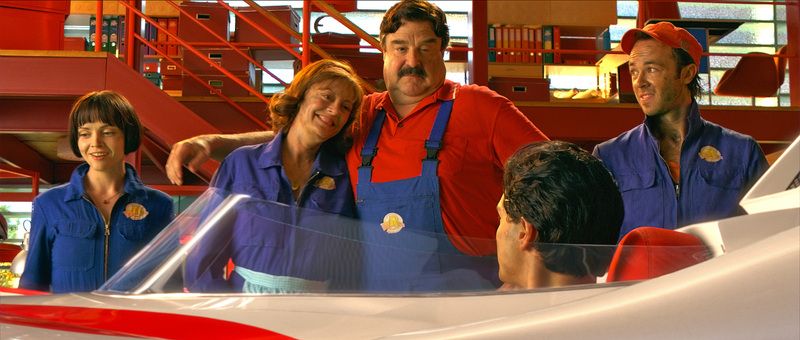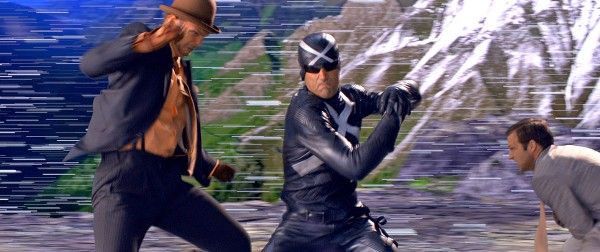One of the year's most anticipated films, Lana Wachowski's The Matrix Resurrections, is about to open, plugging us back into the original Matrix's cyberpunk world. Before it releases, though, it's worth taking a look back at a key film that led up to it: Lana and Lilly Wachowski’s misunderstood masterpiece Speed Racer. Their 2008 anime adaptation was a marvel to behold -- a demonstration of the growth of the directors' voices, echoes of which would be felt in all of their more recent films. Speed Racer is a key part of the Wachowskis' body of work that showed off their ability to tackle a project that seems unadaptable and completely knock it out of the park.
When first released in '08, Speed Racer quickly became one of the most misjudged pieces of work that year, if not the 21st century. Initial critical responses were unmoved by the film's ambitious technical aspects, from its brilliant use of color to fluid and exciting editing. It was a visual panoply that created its own cinematic grammar that should've been hailed for its inventiveness. Perhaps criticisms over the film's unique presentation were inevitable, as bold changes in aesthetic can be unnerving. However, the lasting legacy of the film and how its aesthetics perfectly intertwine with its themes have helped it gain more widespread appreciation as time has gone by.
Speed Racer unabashedly tells a story about fighting corporate corruption and standing up for what is right, even when the odds seem insurmountable. It does this within a brightly colored world that utilizes its ambitious landscape to enhance its storytelling. The visual thrills do not take away from its narrative; instead, they create moments of awe that expertly capture the joyful catharsis that can come from fighting the good fight. It shows how fighting for what is right, even when you know it's probably futile, may be exactly what's needed to upend the system. It reveals how, every so often, a David can defeat a Goliath.
Speed Racer was based on the anime series of the same name. Coming off of The Matrix trilogy and V for Vendetta, the Wachowski siblings took that source material to make a project that was distinctly all their own. It was more of a family film than the duo had ever attempted, presumably in an attempt to reach a broader audience with their work. But despite that, the Wachowskis were able to smuggle in deeper reflections on how the world is stacked against the lower class while the rich and powerful are able to play by their own set of rules, a theme that remains the most moving and revelatory aspect of their work.
The film follows young Speed Racer (Emile Hirsch), an incredibly talented driver in a futuristic world where the sport of racing has been dialed up to insane degrees. Technology has rapidly advanced, allowing for racers to reach speeds that would otherwise be unimaginable. They drive on tracks that wind and loop perilously back on themselves and feature harsh environmental hazards. The cars have the ability to leap through the air and nearly fly. The racers even do battle with other drivers on the track by making use of weapon-like enhancements to their vehicles. In the world of Speed Racer, racing is one of the most entertaining and watched sports in its world, which brings with it a whole host of corporate interests.
Speed, however, chooses to race for his family. His parents Pops (John Goodman) and Mom (Susan Sarandon) run the independent Racer Motors. Most significantly, they build their own cars and operate with all the freedom that comes from being non-corporate. However, Speed begins to realize that same independence puts his family up against forces that would like to see them destroyed. Having already lost a brother to a life spent trying to fight corporate corruption in the racing world, Speed is faced with a decision about how he wants to chart his own path. When approached by the sickeningly smarmy head of Royalton Industries, a corporation with unchecked power and wealth, Speed must decide whether to join the organization or stay with just his loving family by his side as his team. He bravely chooses the latter, setting in motion an underhanded attempt by Mr. Royalton and an entire corrupt apparatus to bring the Racer family down.
Speed Racer is often blunt in its messaging, wearing its consistently cheesy intentions on its sleeve. But it is important to not mistake such cheesiness for naïveté. The film grapples with how the world is not built for the underdog. It delicately reveals to Speed how all his perceptions about the sport he loves were wrong -- a fantasy built from his youthful innocence. There is a consistent thread throughout the film about how Speed must reconcile that innocence and passion for the sport with the harsh realities of what it is built upon. Nowhere is this more clear than when Speed rejects Royalton’s offer, a chilling moment where the corporate overlord decides to reveal his true self after a lengthy deception. Royalton does this because he is immune from consequence. He's been able to get away with it all for this long, so why stop now?
“You don't know how many times I've seen that same cow-eyed, say-it-isn't-so look of disbelief," Royalton wickedly says to Speed, dropping the facade he had been presenting the whole time. "Every bumpkin who comes in from the sticks looks exactly as you do now. I won't bother proving it to you. You walk away from me, you walk away from this deal, you'll know how true it is soon enough. This is your last chance. Are you ready to put away your toys and grow up? Are you ready to make more money in one year than your father made in his whole life? Are you ready to become a real race car driver? Then sign that contract!”
This agonizing, insulting, and drawn-out monologue serves as a thesis statement for the film’s focus. It shows how, in order to survive and no matter how much it hurts, you must stare down those at the top who will cling to power and influence. The way in which Royalton plays upon the fear that comes from the loss of innocence is intentional, a calculated attempt to crush the spirit of anyone who would oppose him. As the megalomaniac behind a corporate conglomerate, he is fully aware of how he can continue to cling to power. He even remarks on how this has worked before and will work again. Failure to compromise will be met with threats of legal destruction and personal annihilation.
What gives Speed Racer its prevailing wisdom comes from how it rejects this false choice between selling out or refusing to grow up. It shows how being good is worth doing, even when it comes with a cost. Not only does Speed turn down the offer, he suffers greatly for it. He makes this decision knowing that he has put a target on his back and that his family will also have to pay a price. Royalton attempted to prey upon Speed’s compassion to his loved ones. His fatal flaw was that he fundamentally underestimated this group of underdogs. Royalton believed he could crush them underfoot when it was actually them who would be the ones to come together to fight back against him. That is the true nature of the underdog that Speed Racer captures. It shows how when a group of the dispossessed stands together, they can put up one hell of a fight. And when all the stars align, that fight just might prove to be successful.
The film itself is a journey through that long road to changing things. Speed must overcome obstacle after obstacle, often realizing that all the hard work leads to barely any change. He is betrayed and backstabbed. He is thrown to the wolves and kicked while he is down. His family and friends face constant attacks. These were all things that Royalton warned him would happen if he didn’t bow before him, leaving Speed feeling hopeless. It is only through his continued determination and grit that he finds a way to overcome. His iron will and family by his side is something that never fails him, even as the rest of the world does. He continues to go out on the race track again and again, willing to risk his life to fight for what is right. He does all this knowing that it might go nowhere and be nothing. His courage offers a glimpse of hope that, when good people take a stand against what is wrong, they can move the needle in the right direction.
There is a poetic irony that the film itself was not initially deemed successful. Speed Racer was a box-office failure, not nearly recouping its budget, and critics were largely unimpressed. Yet that early apathy has given way to a genuine appreciation for all that it did do. With time and reflection, Speed Racer has made a name for itself because of how breathtaking the film is when everything clicks together. There's no better example of this then in the final race. It is where sound and visuals come together to create a magnificent tapestry of a climax. After all the hardships and struggle, the race shows Speed creating music in only the way he can. He is a conductor, the track the sheet music, and his car the orchestra. He has finally found a way to reveal the corruption endemic to the system he has had to fight his way through. He does it by doing what he does best: taking to the track and driving the pants off of every racer out there. All of the reactions and rhythm to his work are edited together to create an experience unlike anything seen before.
The Wachowskis don’t miss a single opportunity to craft emotionally moving cinema that is unflinchingly resonant in its sheer power. The vibrant visuals and soaring score electrify the senses. It creates a wholly unique sensation that only could come from the film’s distinct presentation and fearless commitment to not holding back in all its visual flair. Every flip and jump punctuated by the echoing sound of the car flying through the air, every flashback that shows how ripe with meaning this moment is, it all comes together to create nothing less than an awe-inspiring experience.




